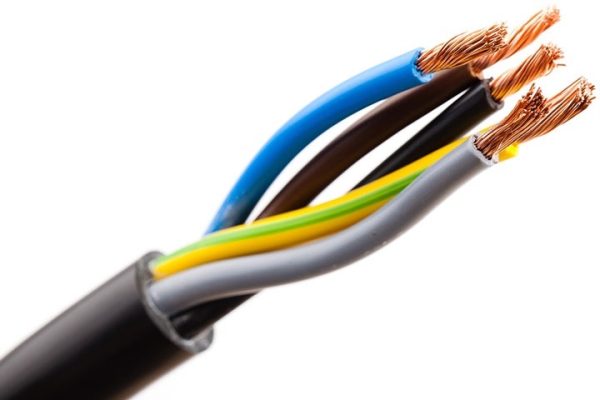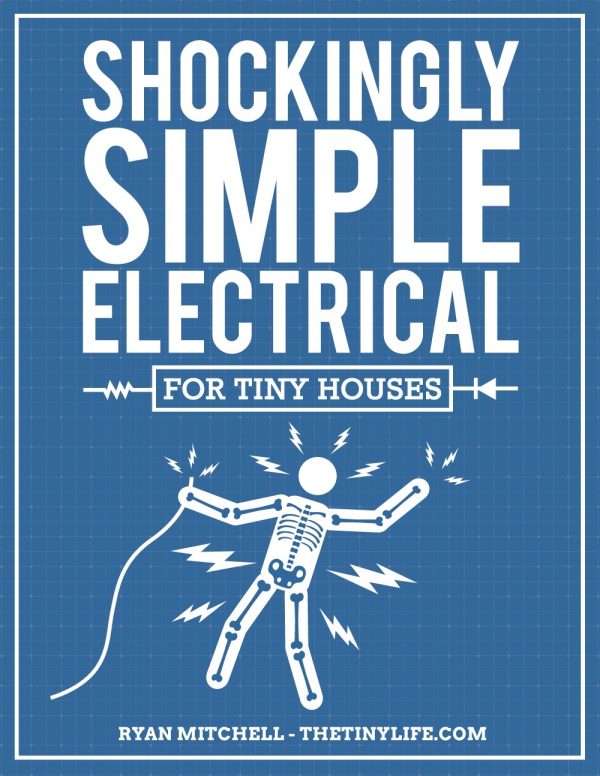- in tiny house story by tinyhousemag
Shockingly Simple Electrical

For Tiny Houses
When it comes to building a tiny house there isn’t much a first time home builder can’t do on their own. With enough hard work, research and knowing when to ask for help; anyone can build a tiny house.
One of the most technical aspects of building a tiny house is the electrical system. Wiring your home is no small feat, but with a little help from the new eBook – “Shockingly Simple Electrical” – and having a professional check your work, you’ll be ready to tackle it.
Author Ryan Mitchell decided to write the book because in most plans and resources this critical system is largely ignored. The ones that did make mention of it often were lacking and left the reader wanting more. So this eBook is designed to take a person who has never wired before and catch them up to speed.
As Mitchell and his team wrote “Shockingly Simple Electrical” they discovered several key areas that novice DIY electricians get tripped up on. Below are the top 10 most common electrical mistakes first time tiny home builders make:

Making connections outside of electrical boxes.
Any connection made between two wires or cables need to be done inside an electrical box. This will help prevent accidental sparks or arches from being able to start an electrical fire.
Cutting wire too short or too long.
When you first start wiring it can be tricky to figure out how long or short to make your ends of your wires. You want to have enough to work with, but not so long that you crowd the box or have excess copper exposed.
Not securing wires to boxes or with wire staples.
Not having wires properly secured can allow connections to be pulled out of the box exposing them to wood that might ignite. On metal boxes, use wire clamps; on plastic boxes you’ll need to staple the wire within 8” of the box.
Reversing the neutral and hot wires.
It can be easy to do if you’re in a hurry or not paying attention, but always make sure that your hot and neutral wires are going to the correct terminal. The lighter screw is often for neutral, the brass/gold colored screw will be for your hot wire and the green screw is always for ground.
Not using GFCI and AFCI outlets/breakers where appropriate.
Ground Fault Circuit Interrupters (GFCI) and Arc Fault Circuit Interrupters (AFCI) are special types of equipment that have been shown to save lives. GFCI outlets are to be used in proximity to water and have helped reduce electrocution deaths by 60% in the U.S. AFCI circuits are required for circuits in your sleeping areas and have been shown to reduce house fires caused by electrical arcs by 50%.

Doing the work yourself, but not having a professional review it
There are few things when it comes to tiny houses that I feel you really need to loop in a professional, but electrical is one area I feel it is a must. Wiring your own house can save you a ton of money, but for $100-$200 you can have someone give you feedback on your work. This brings peace of mind, keeps you safe and furthers your learning; all things worthy of the small investment.
Not planning your system for future needs.
An overloaded circuit can be inconvenient and a potential fire hazard. Make sure you think through what you’re planning on putting on that circuit now and in the future. The National Electrical Code requires that your circuits be size to handle 125% of the expected load.
Loose connections in boxes, connections and in panels.
A loose connection in your system can eventually work its way free if not properly connected. This could lead to arcs, system failures and compromised grounding. Always make sure you test the connections you make by wiggling the wires to ensure they’ll stay put.
Choosing the wrong gauge wire.
Having an improperly size wire or cable for your application can be dangerous. In our ebook we help you plan your system and choose the appropriate wire or cable size. A lot of considerations need to be made to ensure your gauge is the correct size for the power usage of the circuit.

Not asking questions or seeking help when you’re unsure.
Learning to wire your home is no small task and honestly it shouldn’t be something that you do just to save some money, it should be a learning experience no matter how good you become. When it comes to wiring, you need to have humility to know when you are out of your depth. Ultimately the work you do rests on your shoulders and yours alone, so seek help when needed. When it doubt, seek help.
It took a team of people to make this eBook, including Master Electricians, Code Enforcement Officers and a Tiny Home Builder. The end result is 80+ pages of core content that is geared specifically for tiny houses. With dozens of custom graphics you’ll be able see how it all comes together, including real life photographs of wiring done in a tiny house. If you are interested in purchasing a copy visit The Tiny Life and their online store.
Author, Editor, and Tiny House Builder, Ryan Mitchell Ryan lives in Charlotte, NC, and has been following the Tiny House movement for years. He is currently building his own tiny house in the great state of North Carolina. He focuses on alternative housing options and sustainable local agriculture as key components to meet future needs.
Did You Know?
Electrical fires in our homes claim the lives of 485 Americans each year and injure 2,305 more. Some of these fires are caused by electrical system failures and appliance defects, but many more are caused by the misuse and poor maintenance of electrical appliances, incorrectly installed wiring, and overloaded circuits and extension cords.
Written by Ryan Mitchell for the Tiny House Magazine Issue 14

If you enjoy articles like this subscribe to the Tiny House Magazine
